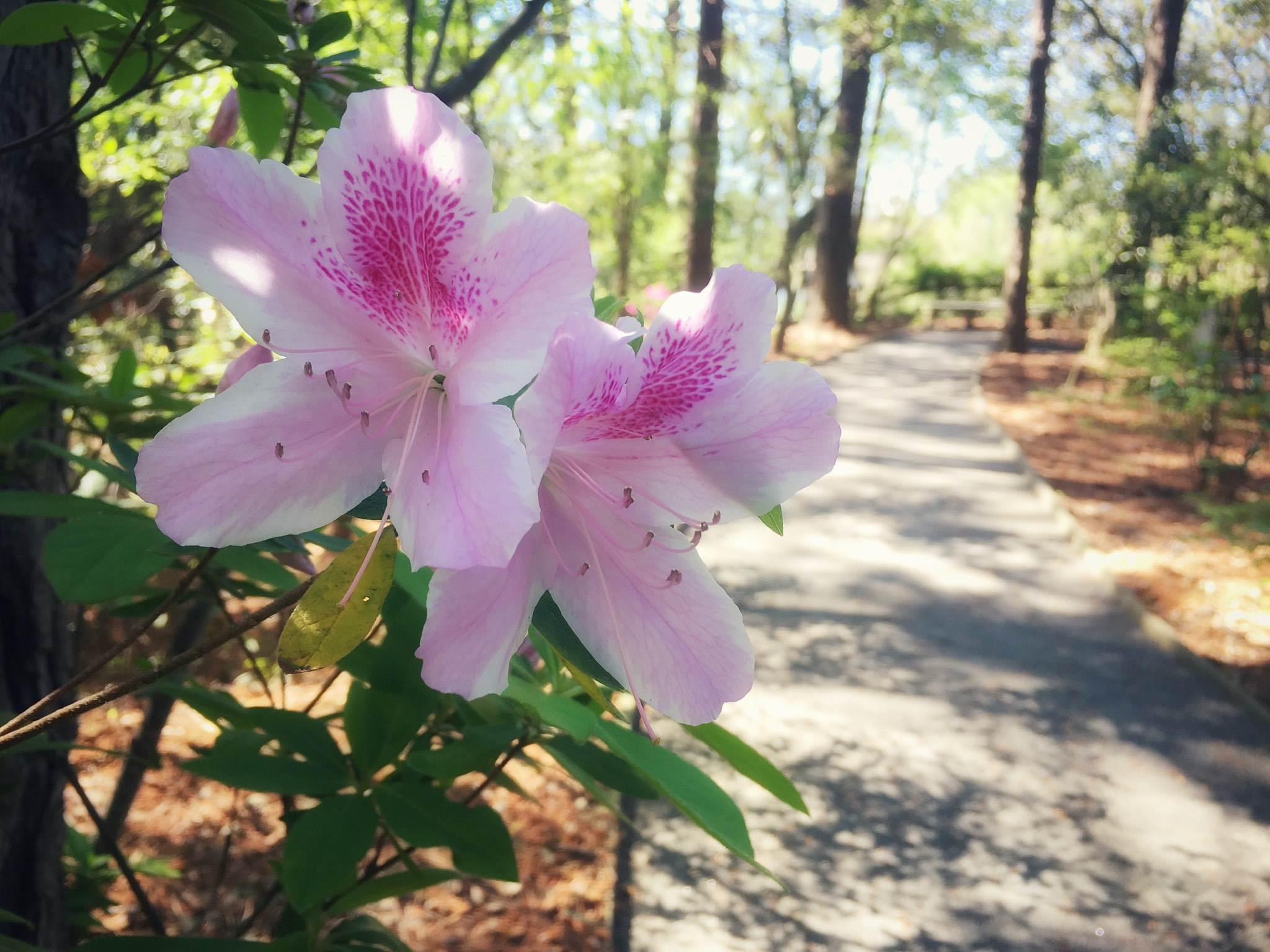Plants that Survive & Thrive in the OBX – Azalea
go.ncsu.edu/readext?672479
en Español / em Português
El inglés es el idioma de control de esta página. En la medida en que haya algún conflicto entre la traducción al inglés y la traducción, el inglés prevalece.
Al hacer clic en el enlace de traducción se activa un servicio de traducción gratuito para convertir la página al español. Al igual que con cualquier traducción por Internet, la conversión no es sensible al contexto y puede que no traduzca el texto en su significado original. NC State Extension no garantiza la exactitud del texto traducido. Por favor, tenga en cuenta que algunas aplicaciones y/o servicios pueden no funcionar como se espera cuando se traducen.
Português
Inglês é o idioma de controle desta página. Na medida que haja algum conflito entre o texto original em Inglês e a tradução, o Inglês prevalece.
Ao clicar no link de tradução, um serviço gratuito de tradução será ativado para converter a página para o Português. Como em qualquer tradução pela internet, a conversão não é sensivel ao contexto e pode não ocorrer a tradução para o significado orginal. O serviço de Extensão da Carolina do Norte (NC State Extension) não garante a exatidão do texto traduzido. Por favor, observe que algumas funções ou serviços podem não funcionar como esperado após a tradução.
English
English is the controlling language of this page. To the extent there is any conflict between the English text and the translation, English controls.
Clicking on the translation link activates a free translation service to convert the page to Spanish. As with any Internet translation, the conversion is not context-sensitive and may not translate the text to its original meaning. NC State Extension does not guarantee the accuracy of the translated text. Please note that some applications and/or services may not function as expected when translated.
Collapse ▲Join the Master Gardener℠ volunteers of Dare County in the coming weeks to discuss plants that have been proven to survive and thrive on the OBX!
April is Azalea time at the Outer Banks Arboretum & Teaching Garden. We encourage you to take stroll and an enjoy this beautiful sight.
Azaleas are among the most popular flowering shrubs grown. With proper site selection and planting methods they can do very well here on the Outer Banks.
For more information, check out this video presentation by the Dare County Extension Master Gardeners:
Plant Selection
It is best to choose an Azalea variety that is more suited for the Outer Banks area. This table will provide a list of options:
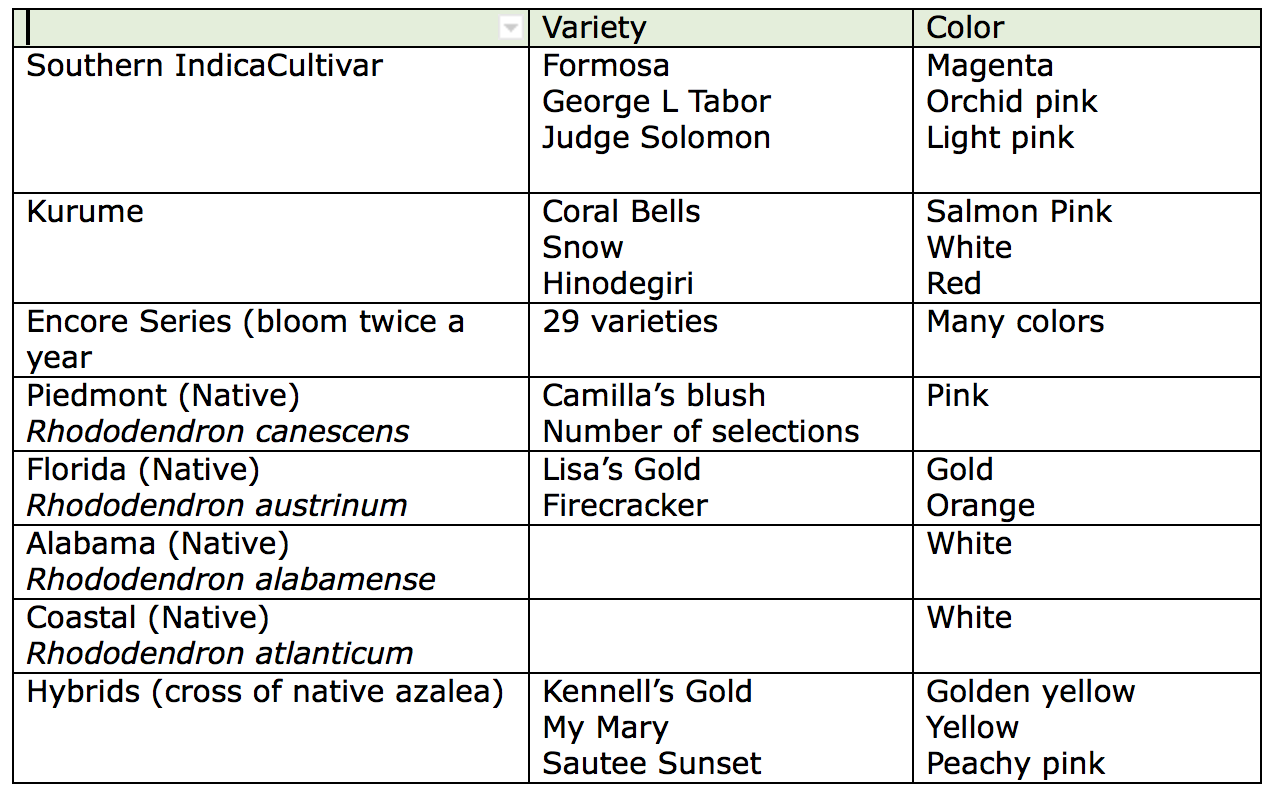
Site Selection
Azaleas prefer cool, partially shaded sites, such as the filtered shade of pine trees. Flowers last longer when plants are partially shaded. Although some varieties tolerate sun better than others, they all prefer an area that is not exposed to long periods of hot, full sun and drying winds. Do not plant azaleas in heavy shade, as poor flowering and weak growth may result. Avoid planting under hardwoods, since they must then compete with the trees for nutrients and water.
Soil
Azaleas grow best in slightly acidic (4.5 to 6.0 pH), well-drained, organic soils. Before planting, test the soil in the areas you may want to plant your azaleas then adjust the planting site according to the results. Soil test kits can be picked up at the N.C. Cooperative Extension office in Dare County. Well-drained soil is very important to avoid damage to the roots. If the area is not well drained, add composted pine bark to as large an area as possible, and plant the root ball slightly higher than ground level.
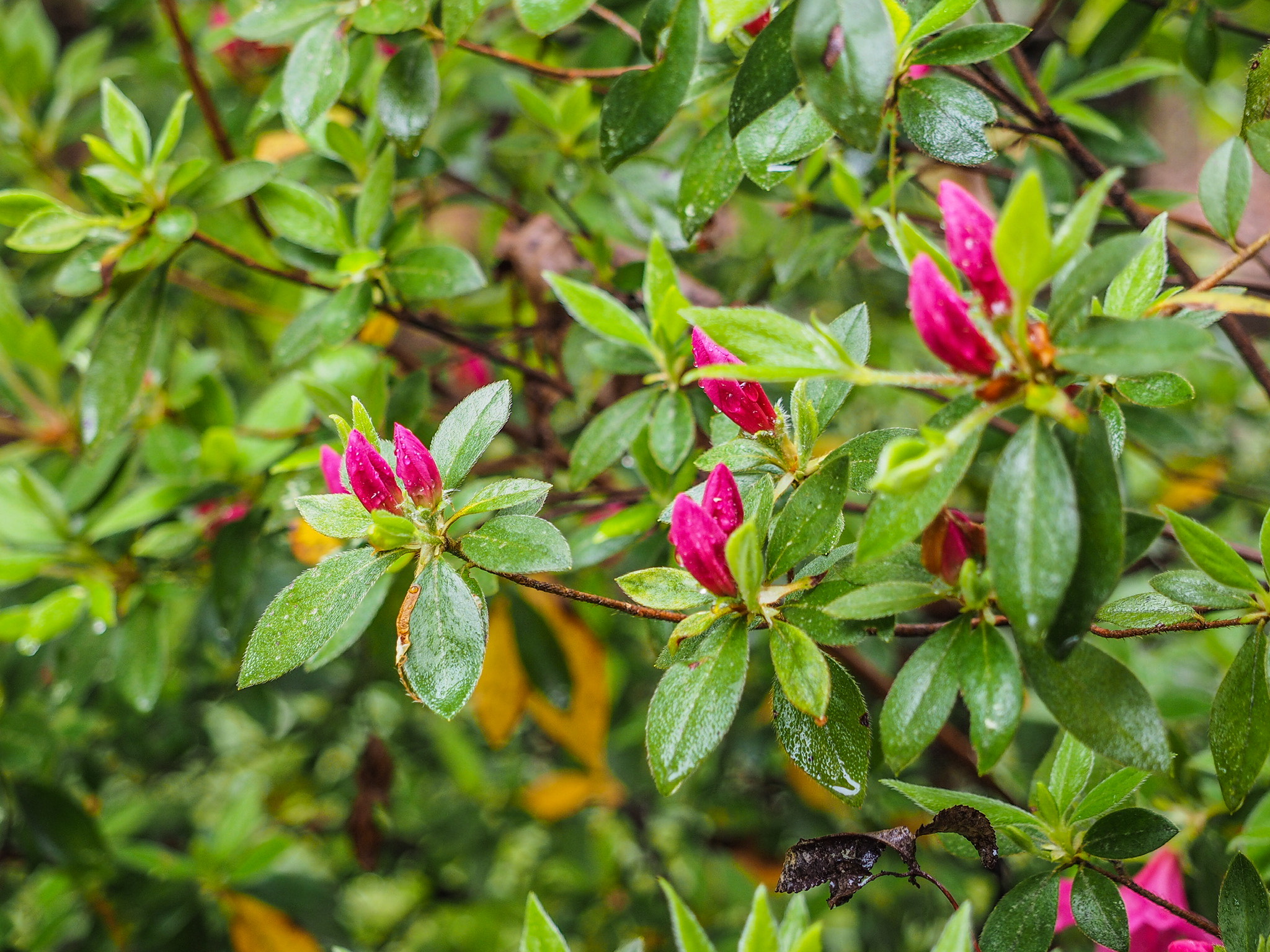
Mulch
A 2- to 3-inch layer of organic mulch is very important. It conserves soil moisture, maintains soil temperature and helps discourage weeds. Pine straw, composted pine bark and leaves work very well as mulch, enriching the soil with organic matter as they decompose. Keep the mulch a couple of inches away from the main stem to keep the bark dry and extend it beyond the outermost branches.
Watering
Azaleas require irrigation during dry periods. This is especially true of those planted in the spring. Azaleas planted in warm weather in sandy soils may require watering of the root mass twice a week during the first year. Overhead irrigation such as sprinklers may promote disease.
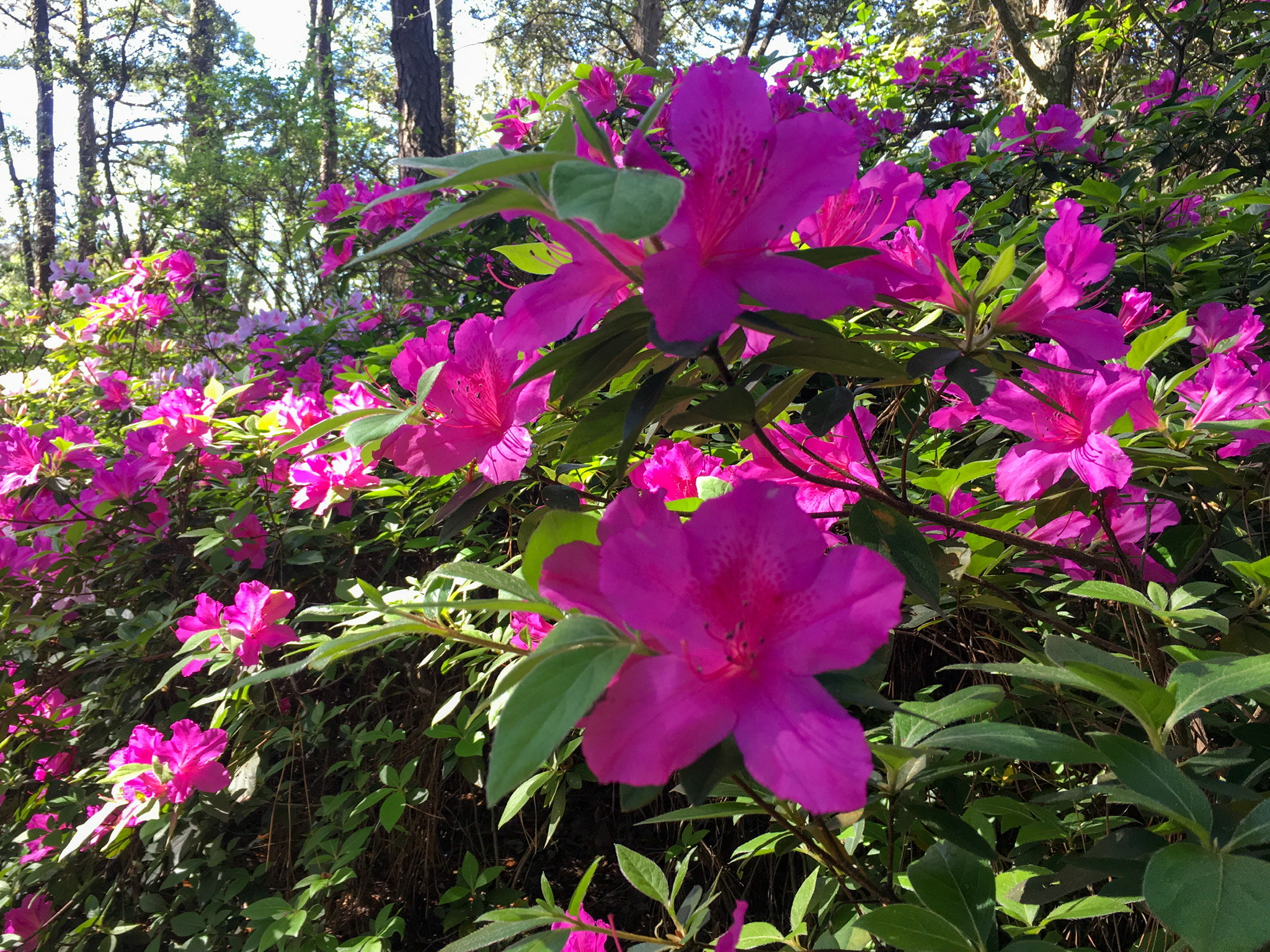
Fertilizing
Azaleas have low nutritional requirements compared to other shrubs. A soil amended with organic matter prior to planting followed by a mulch of organic material will usually provide enough nutrients for adequate growth. Before fertilizing, have a specific reason for doing so, such as increasing growth rate or correcting a nutrient deficiency. Symptoms of a nutrient deficiency may include stunted growth, smaller than normal leaves, light green to yellowish leaf color and
early leaf drop. Be aware that these same symptoms can be caused by other problems such as heavily compacted soil; stresses from insects, disease organisms and weeds; and excessively wet or dry soil. Fertilization will not correct those problems, so be certain that you know the cause of the symptoms and treat them appropriately.
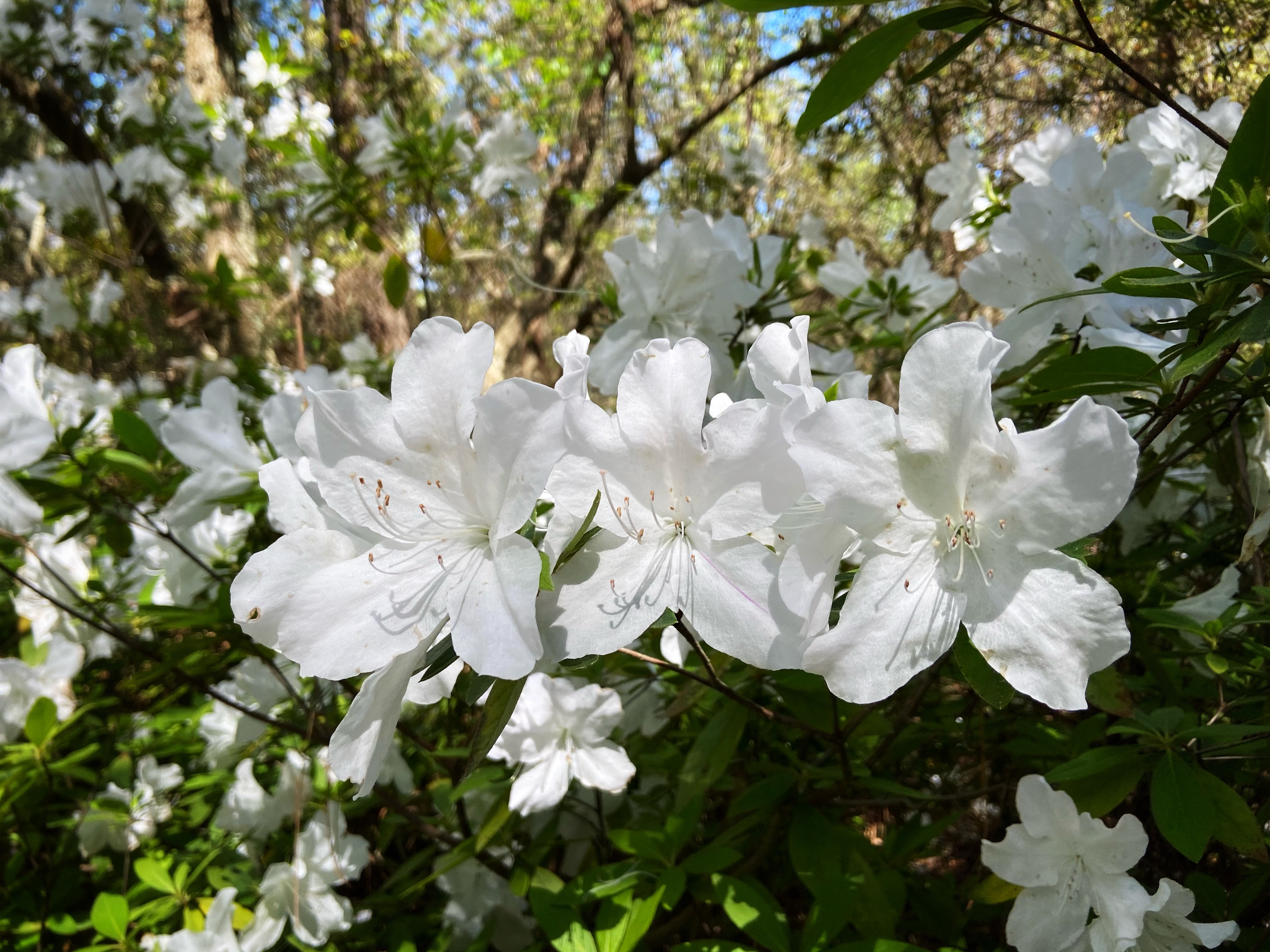
Pruning
Thinning removes branches back to the main trunk or another branch. This method is used to remove leggy branches that extend beyond the canopy of the plant, remove damaged or diseased wood, or reduce the size of the plant. Thinning allows light to penetrate the shrub, encouraging growth on interior branches. You can thin at any time of the year without causing a significant impact on flowering, growth or cold hardiness of the plant. However, to reduce the impact on flowers the following year, prune just after flowering in the spring. Heading refers to the cutting back of a branch, not necessarily to a side branch. This method is used to reduce the size of a plant, create a hedge or to renew old overgrown plants. Renew overgrown plants by cutting them back to within 6 to 12 inches of ground-level. This practice results in abundant new growth by midsummer.
To request more information or a copy of the Azalea handout, please email the Dare County Master Gardener Volunteers at greenlineobx@gmail.com.
Learn more about the Dare County Master Gardener Volunteers and take a trip to the Outer Banks Arboretum & Teaching Garden to view beautiful Azaleas yourself!





